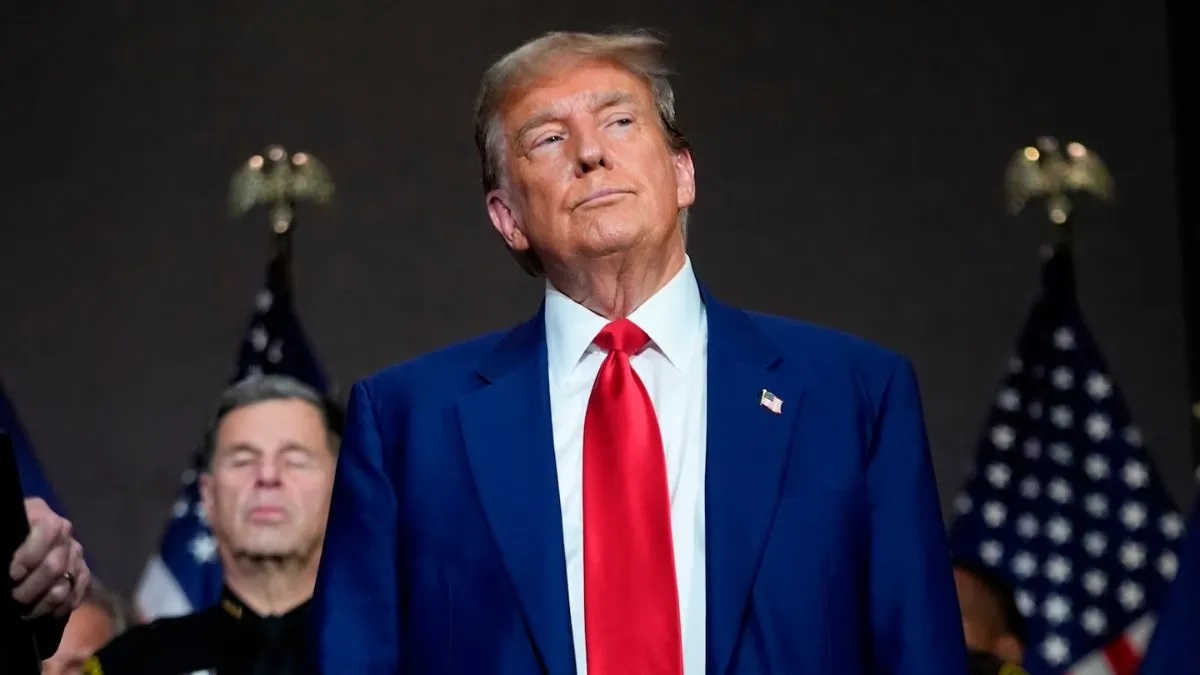On Thursday, the government’s chief human resources office released a new rule that makes it harder to fire thousands of federal workers. They did this to counteract former President Donald Trump’s plans to drastically change the workforce along ideological lines if he wins the White House again in November.
The Office of Personnel Management’s rules prohibit labeling career civil servants as political appointees or other at-will workers, who are more susceptible to termination. It’s in response to “Schedule F,” an executive order Trump made in 2020 that wanted to reclassify tens of thousands of the 2.2 million federal workers and get rid of protections for their jobs.
When President Biden took office, he got rid of Schedule F. But if Trump brought it back during a second term, he could significantly increase the number of political appointees, who currently make up about 4,000 government employees and usually leave with each new president.
It’s not clear how many workers Schedule F might have affected. But the National Treasury Employee Union used freedom of information requests to get documents that show federal workers like office managers and experts in human resources and cybersecurity might have been reclassified. This means that Trump’s order may have affected more people than was previously thought.
The new rule, outlining the necessary steps for reclassifying federal workers and emphasizing that civil service protections are inalienable, could prevent a future Schedule F order. It also clarifies that policymakers can only use classifications for non-career political appointments, not for career civil workers.
“Any president will now find it much harder to fire the impartial professionals who work for our government in order to make room for hand-picked party loyalists,” National Treasury Employees Union President Doreen Greenwald said in a statement.
Analysts at the political risk firm Eurasia Group said that the new rule doesn’t stop a second Trump administration from changing the status of government servants to Schedule F workers. However, “the Trump administration would need to go through an even more cumbersome regulatory process (and likely face court challenges) to redesignate employees as Schedule F rather than unilaterally doing so on Day 1,” a report said.
Sharply different takes on the new rule
The rule has been applauded by good government organizations, liberal think institutions, and campaigners. They saw strengthening federal worker rights as a primary priority, given that replacing existing government employees with new, more conservative options is a crucial component of the conservative Heritage Foundation’s roughly 1,000-page playbook known as “Project 2025.”
That proposal calls for scrutinizing and perhaps firing scores of federal employees, as well as recruiting conservative replacements, in order to eliminate what senior Republicans have long criticized as the “deep state” administrative bureaucracy.
Skye Perryman, president and CEO of Democracy Forward, which has led a coalition of nearly 30 advocacy organizations backing the rule, described it as “extraordinarily strong” and said it can effectively oppose the “highly resourced, anti-democratic groups” behind Project 2025.
Mr. Perryman clarified that this issue is not a thorny one, despite its perceived complexity. “This is really foundational to how we can ensure that the government delivers for people, and for us, that’s what a democracy is about.”
The federal registry is publishing the 237-page final rule, which will go into effect next month. The Office of Personnel Management suggested the modifications in November and then evaluated and reacted to over 4,000 public comments on them. Officials from some of the most prominent conservative organizations opposed the new rule, but almost two-thirds of the comments were positive.
Should Trump secure re-election, his administration might instruct the Office of Personnel Management to formulate new regulations. However, the procedure takes months and needs thorough explanations as to why additional restrictions would be beneficial, perhaps opening the door to legal challenges from opponents.
Rob Shriver, deputy director of the Office of Personnel Management, stated that the new regulation assures that federal employee protections “cannot be erased by a technical HR process,” as “Schedule F attempted to do.”
“This rule is about making sure the American public can continue to count on federal workers to apply their skills and expertise to carrying out their jobs, no matter their personal political beliefs,” Shriver said in a telephone interview.
He emphasized that 85% of federal employees, who are “our friends, neighbors, and family members,” work outside of Washington and are “dedicated to serving the American people, not political agendas.”

